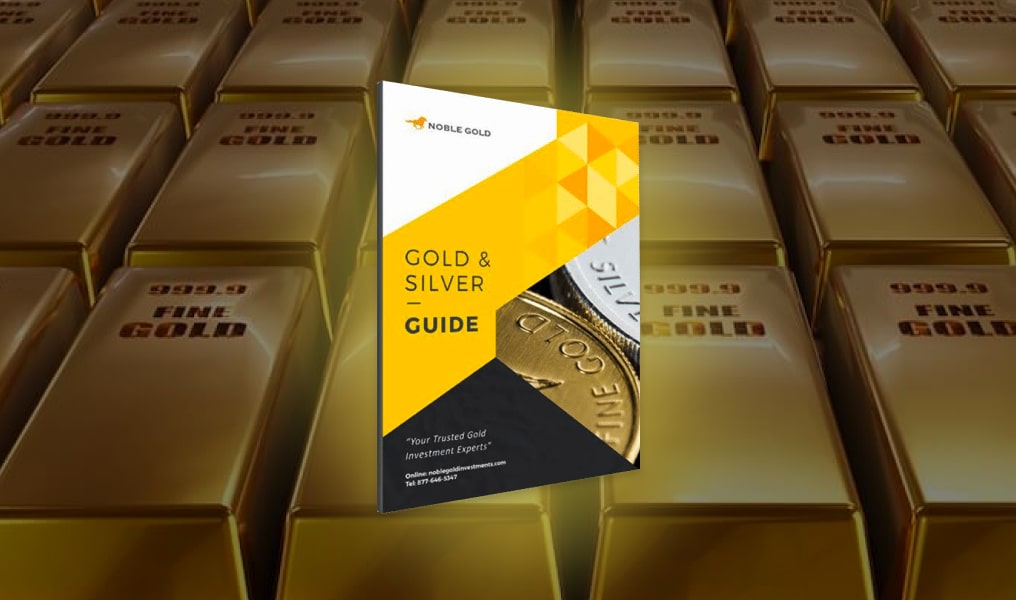If you’re considering making an investment in a precious metals IRA, you’re probably already somewhat familiar with the tax advantages and inflation hedging benefits they offer. But, before deciding to invest, it’s essential to understand the requirements and restrictions of a precious metals IRA.
Knowing what types of investments are allowed, eligibility criteria, storage rules, and other regulations will help ensure that your investment plan meets IRS standards and any personal goals you have set.
Read on to learn more about precious metals IRA requirements and restrictions so you can make an informed decision when choosing how best to save for retirement.
Eligibility Requirements for a Precious Metals IRA
To be eligible for a precious metals IRA, you must meet specific criteria. You must be at least 18 years old and have earned income in the past year. Additionally, you cannot be considered a “disqualified person”, or someone who can’t do direct or indirect deals, investments or transaction with the IRA.
Precious Metals IRA Rules And Restrictions
Investing in a precious metals IRA is an excellent way to diversify your retirement portfolio and protect yourself from market volatility. However, there are certain rules and restrictions that investors must be aware of before investing in these accounts.
You Can Only Buy Gold Through A Custodian
When investing in a precious metals IRA, you must work with a custodian—a financial institution responsible for protecting the assets in your account—to set up a self-directed IRA and manage the transfer of funds from your account to the precious metals dealer.
Gold IRA companies like SpaceXgold offer these services as part of their package since they usually have relationships with top custodians.
Choosing the right custodian when setting up a gold IRA is important because not all are created equal. When selecting a suitable custodian, consider the following:
- Fees charged by each company
- Customer service quality
- Reputation among investors
- Experience dealing with IRS regulations
- Storage security measures taken by third-party vaults
- Ability to track investments online
- Availability of additional services like asset protection planning or estate planning advice
- Whether they provide educational resources about investing in precious metals
You Must Choose IRA-Eligible Metals
The IRS has certain requirements for coins and bullion that can be held in a precious metals IRA. Gold must contain .9999 fine gold, silver coins and bars must be 99.9% pure, and platinum and palladium must be 99.95% pure – the only exception is Gold American Eagle bullion and proof coins, which have a fineness of .9167. The IRS put these limits to ensure investors purchase high-quality metals that will hold their value over the long term.
In some cases, the IRS considers IRA-eligible gold to be a “collectible” if it has been graded by an organization such as the Professional Coin Grading Service (PCGS). You can’t hold it in your gold IRA account if this is the case. It’s best to wait until you have liquidated your assets from your IRA before having any of your precious metals graded or certified by PCGS or another grading service provider.
If you want to invest in physical precious metals for retirement savings purposes, make sure they meet all the requirements set forth by the IRS to qualify for inclusion into an IRA.
You Can’t Add Gold You Already Own To A Self-Directed IRA
Many people are familiar with the idea of a self-directed IRA when investing in gold. These accounts allow you to invest in gold and other precious metals as part of your retirement savings plan. However, many people don’t realize that you can’t add gold you already own to a self-directed IRA.
For an asset to be added to an IRA, it must meet certain requirements set forth by the Internal Revenue Code. Even if your gold meets these requirements, it can’t be transferred into a self-directed IRA without first being sold and then repurchased through an approved distributor.
Your Must Store Your Gold In An IRS-Approved Depository
The IRS requires that your gold be stored in an approved depository facility. Your custodian will facilitate the handoff of your physical metals to this secure storage facility, where they will remain until you request them back from your custodian.
The depository is responsible for keeping your gold safe until it is sold or distributed to you by secure delivery at your home address when the custodian requests. Not all depositories are created equal; some offer better security than others, so research any potential facility before deciding where to store your investments.
You should also consider other factors such as cost (some facilities charge fees based on weight), location (it’s best if the depository is close enough that shipping costs don’t become too expensive), and customer service (you want someone who can answer questions quickly). Make sure these things fit into what you’re looking for before committing to any particular option.
Precious metals stored at one of these approved depositories will typically have insurance coverage of up to $1 million per account holder, with additional coverage available if needed. The custodian or trustee managing your account should provide details on how much insurance coverage is included with each type of asset you purchase. This way, you know what level of protection your investments have against theft or damage while being held at the depository institution.
Don’t Contribute More Than You’re Able to
When investing in a precious metals IRA, you want to ensure that you don’t contribute more than the annual contribution limits set by the IRS. Contributing too much can result in costly penalties and fees. Always consult with a financial advisor before making large investments since they can provide valuable insight about which types of assets might work best given your specific goals and objectives for retirement planning purposes.
The current annual contribution limit for an individual retirement account (IRA) is $6,000 or $7,000 if you’re 50 or older. This amount includes any contributions to traditional IRAs, Roth IRAs, SEP-IRAs, and SIMPLE IRAs. It also includes employer contributions made on your behalf and spousal contributions.
If you exceed these limits, a 6% excise tax will be imposed on the excess amount each year until it is corrected. In addition to this penalty fee, any earnings generated from the extra amount will be subject to taxes when withdrawn from your account at retirement age.
It’s essential to track how much money has been contributed to your IRA throughout the year, so you don’t exceed the limit without realizing it. You should also factor in any employer matching funds when calculating how close you are to reaching the maximum allowable contribution limit for an IRA each year.
Make Sure To Hold Precious Metals In Your IRA Until You’re 59 ½
The IRS states that individuals can’t withdraw from their gold IRA until they turn 59 ½ years old. When this happens, any income taxes due on withdrawals must be paid, and physical possession of the metals can be taken without penalty. This allows investors to hold onto their precious metals for future sale or exchange during times of crisis or even pass them down as an inheritance.
However, exceptions exist where no penalty will apply if funds are withdrawn before reaching 59 ½ years old. These include becoming disabled or buying a home for the first time; annuity payments based on life expectancy may also allow you to avoid the 10% fee associated with early withdrawals.
Once you reach 72 years old, mandatory distributions must begin from your gold IRA account. Failure to do so could lead to a 50% excise tax each year that required amounts aren’t withdrawn. It’s important to follow all rules surrounding these accounts to ensure maximum returns and minimize potential penalties and fees that could otherwise eat into savings over time.
Setting Up A Precious Metals IRA
Setting up a Precious Metals IRA is the first step for investors who want to take advantage of the tax advantages and potential returns associated with investing in gold, silver, platinum, and palladium. To help make the process easy, we’ve outlined how to open a precious metals IRA successfully.
Step 1: Selecting A Custodian To Open An Account
The process begins by selecting a custodian or trustee to hold your account. This can be done through a bank or financial institution offering precious metals IRAs.
Once you have selected your custodian/trustee, you need to open an account with them and fund it with cash or transfer funds from another retirement plan such as a 401(k) or traditional IRA. Your custodian/trustee will provide you with the necessary paperwork to complete the setup process.
Step 2: Selecting Your Precious Metal Investments
The next step is to select which type of precious metal investments you would like in your IRA. You may choose from coins, bars, bullion products, exchange-traded funds (ETFs), stocks related to precious metals companies, and mutual funds focused on these types of investments.
It’s crucial that whatever investment option you choose meets IRS guidelines for eligibility in an IRA. So, research before deciding what asset classes are allowed in your particular situation.
Step 3: Go Over Storage Options
Your custodian/trustee will also provide information regarding storage requirements for any physical assets purchased within the account, such as coins or bars. Typically this means they must be stored at an approved depository facility outside your home address where they are insured against theft and damage due to natural disasters, such as fire or flooding.
Step 4: Take Advantage Of Your IRA
Finally, once all paperwork has been completed and assets have been purchased according to IRS regulations, it’s time for investors to take advantage of their new precious metals IRA.
Investing in gold can offer many benefits, including portfolio diversification, while potentially protecting against inflationary pressures over time – something every investor should consider when planning for retirement security.
Funding A Precious Metals IRA
When funding a precious metals IRA you have a few main options – investing cash, rolling over an existing IRA, or transferring an existing 401(k). If you plan to invest in cash, you are limited as to how much you can make tax deferred within a given year, but if you’re planning to transfer or rollover a different retirement plan, you can do so without any tax implications.
Funding With Cash
Many younger investors who are opening their first retirement savings account or are getting a jumpstart on diversification choose to fund their IRA account with cash. When you invest cash, you’re not only allowing that money to grow tax-free until you withdraw the money, you are also lowering your annual tax liability.
There is an annual limit for an IRA contribution for tax advantages in 2023 is $6,500 if you’re younger than 50, and $7,500 if you’re older than 50. This means that up to $6,500 of your IRA contribution can be deducted directly from your annual income, thereby reducing your taxable burden.
Rolling Over A Previous Retirement Account
Rolling over funds from other retirement accounts into a precious metals IRA is very popular with investors who have already been saving for retirement but are looking for an alternative investment vehicle that will help protect their money against inflation and economic downturns.
Traditional IRAs, 401(k)s, and 403(b)s are all eligible for rollover into a precious metals IRA. They involve transferring the funds directly from one account to another without incurring any taxes or penalties. Once complete, you will have access to those funds, which can be used to purchase approved precious metals assets within your new IRA account.
Roth IRAs and SEP IRAs also qualify for rollovers into a precious metals IRA. In this case, however, it’s important to note that Roth contributions must remain separate from traditional contributions when rolling them over as they are subject to different rules regarding taxation upon withdrawal of funds later.
It’s important to consult with a financial advisor before making any decisions about rolling these types of accounts into a precious metals IRA to understand how each type of contribution works within your particular situation.
Open A Precious Metals IRA With SpaceXgold Today
If you’re interested in investing in precious metals, it’s essential to understand the requirements and restrictions the IRS has for purchasing them in an IRA. By familiarizing yourself with these rules, you can ensure that you set up your Precious Metals IRA correctly and can take advantage of all its benefits.
Give SpaceXgold a call if you’re looking for a secure way to save for retirement and take advantage of the tax benefits that come with investing in precious metals. Our knowledgeable team can help you navigate the requirements and restrictions associated with setting up your gold or silver IRA so that you can start saving today.






